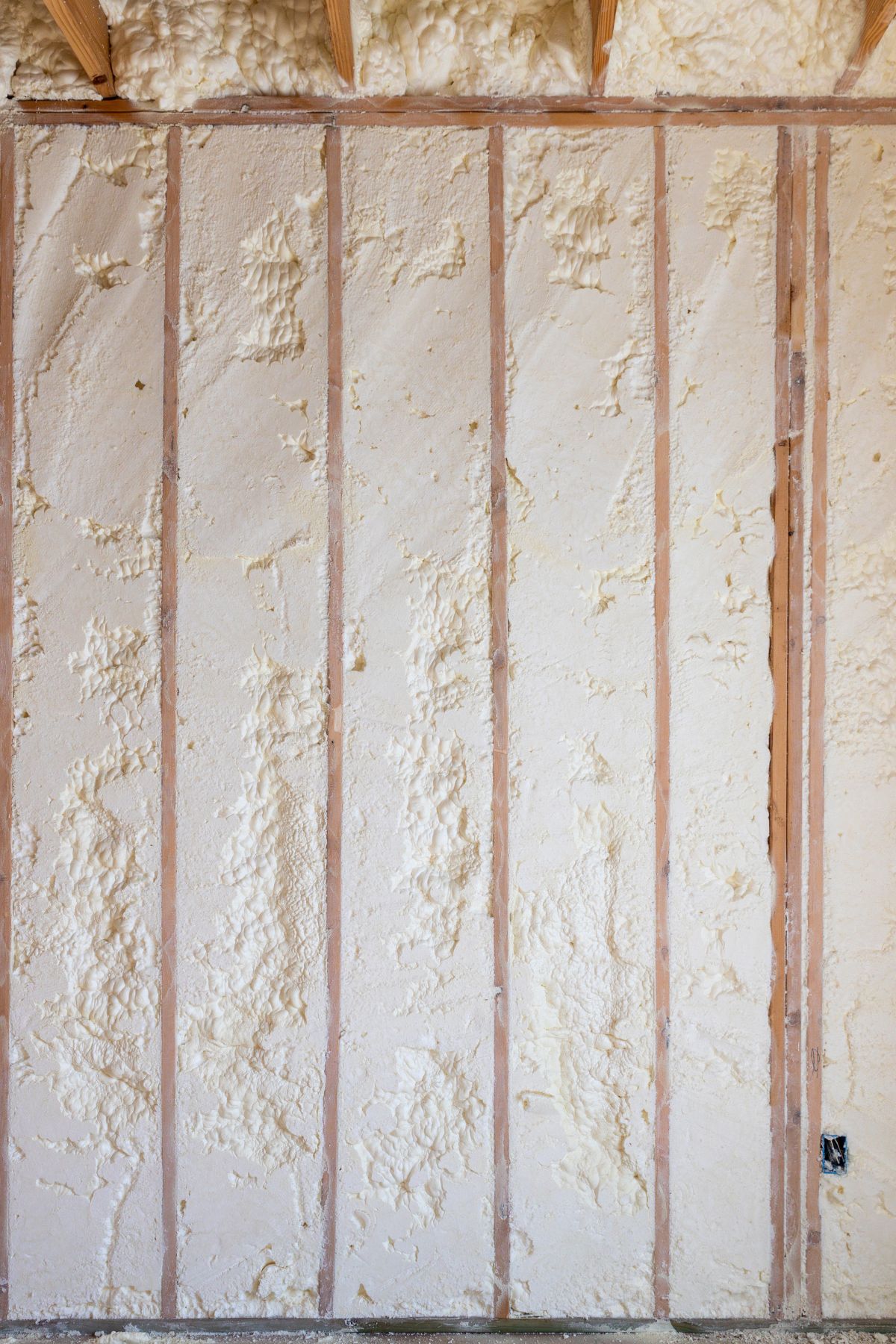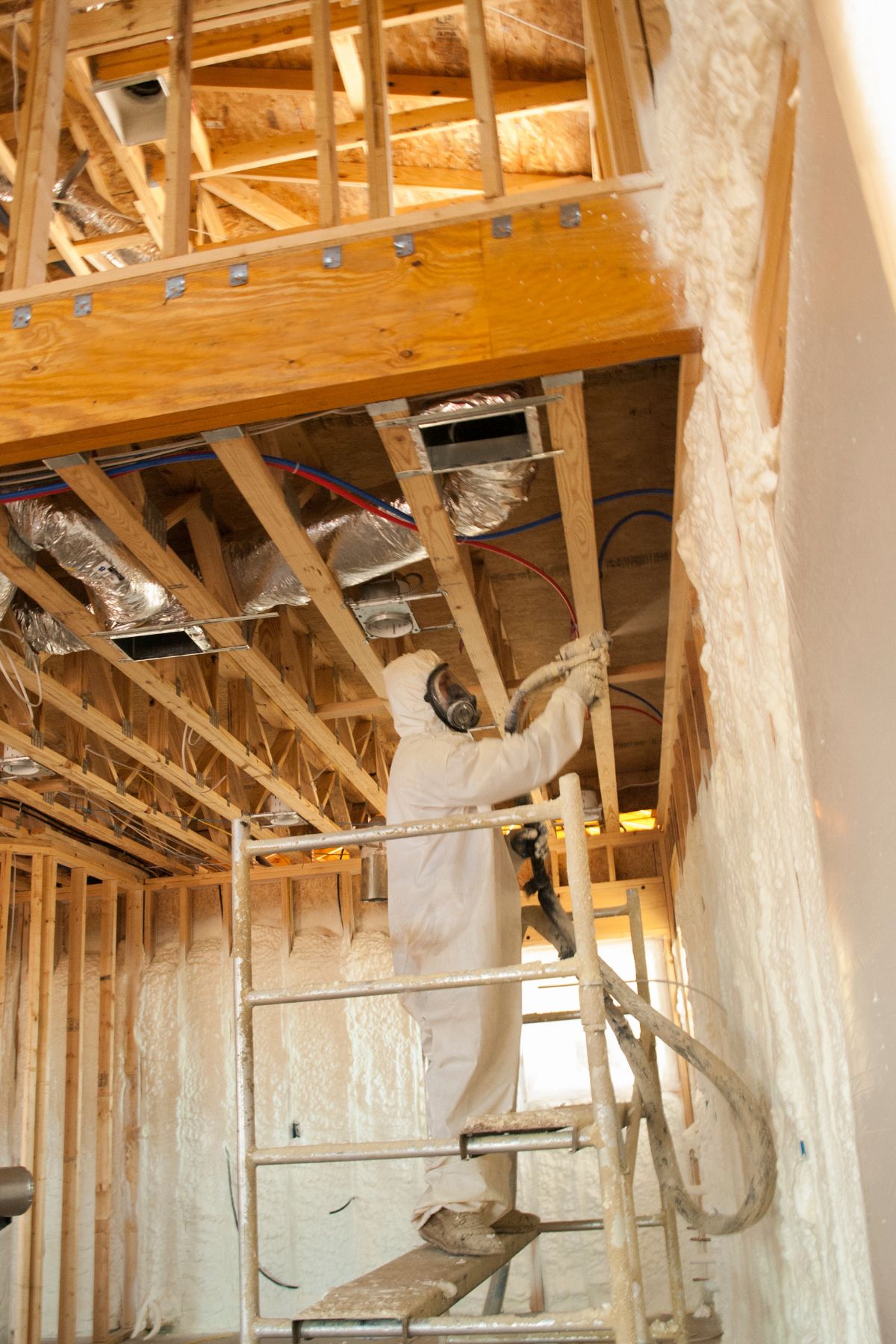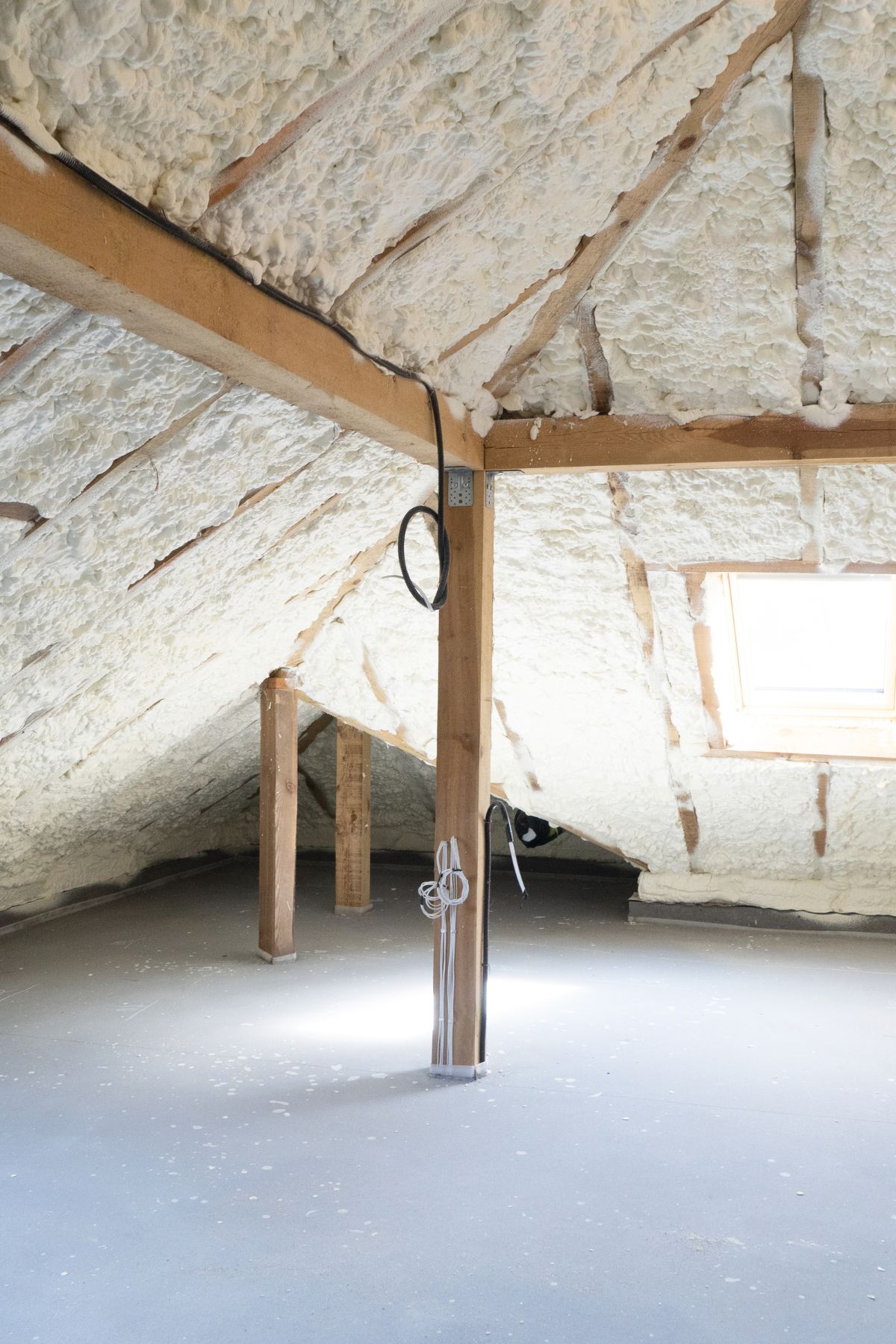A Spray Foam Insulation Cost Calculator is a reliable way to estimate your project cost before hiring a contractor or purchasing foam kits.
Spray Foam Insulation Cost Calculator
Estimate installed spray foam insulation cost based on area, thickness, foam type, and region.
Whether you’re insulating an attic, basement, crawl space, garage, or a whole home, this guide will walk you through everything you need to know about spray foam prices, material usage, labor factors, and what drives the final estimate. By the end, you’ll understand exactly how your project is calculated and how to use a Spray Foam Insulation Cost Calculator to plan your budget with confidence.

Why Spray Foam Costs Vary So Much
Spray foam insulation is not a one-price-fits-all material. Costs vary widely based on material type, project complexity, labor rates, climate zone, and building code requirements. Most homeowners only see national averages online, but those numbers rarely apply to real-world projects. A good Spray Foam Insulation Cost Calculator brings clarity by breaking down your project into measurable components.
Below are the main factors that determine the final cost per square foot.
1. Foam Type: Open-Cell vs. Closed-Cell
Open-Cell Spray Foam
- Softer, more flexible
- Lower R-value per inch
- Better sound absorption
- Typically cheaper
Cost: $0.45–$0.75 per board foot (material)
Installed: $0.90–$1.40 per board foot
Closed-Cell Spray Foam
- Rigid and dense
- Higher R-value per inch
- Acts as air, moisture, and vapor barrier
- Used in basements, crawl spaces, rim joists, and roof decks
Cost: $1.00–$1.65 per board foot (material)
Installed: $1.50–$2.90 per board foot
Because foam type drives the price so strongly, every Spray Foam Insulation Cost Calculator separates costs based on open-cell versus closed-cell usage.
2. Board Feet, Thickness & Coverage
Spray foam is measured in board feet, not gallons or square footage.
1 board foot = coverage for 1 ft² @ 1 inch thickness
So:
Board feet needed = area (ft²) × thickness (inches)
A Spray Foam Insulation Cost Calculator multiplies this by your waste factor (usually 8–15%) to produce a realistic number.
3. Waste & Overspray Percentage
No spray foam job is perfectly clean. Every project needs extra foam to account for:
- Overspray
- Irregular framing
- Deep cavities
- Touch-ups
- Sloped rooflines
- Shrinkage
Typical waste values:
- Open-cell: 10–15%
- Closed-cell: 8–12%
Better calculators (including your Spray Foam Insulation Cost Calculator) allow custom waste percentages.
4. Regional Labor Adjustments
Labor rates drive the majority of insulation cost.
High-cost regions (Northeast, West Coast, metro areas) can add 10–25% to the price.
Low-cost regions (Midwest, South, rural zones) may reduce pricing by 5–15%.
A quality Spray Foam Insulation Cost Calculator applies regional adjustments AFTER calculating foam material, removal, fire coating, and labor.
5. Install Complexity
Some spaces simply require more time and expertise:
- Tight crawl spaces
- Elevated or steep roof decks
- Rim joist boxes
- Existing insulation removal
- Obstacles (HVAC, wiring, plumbing)
- Multi-zone projects
More complexity → more labor → higher cost.
This is why your calculator now includes Pro Mode, allowing multiple zones with unique parameters.
6. Old Insulation Removal
Removing fiberglass or cellulose increases cost by:
$0.40–$1.00 per ft²
Your Spray Foam Insulation Cost Calculator includes this as an optional cost per square foot.
7. Fire/Intumescent Coatings
Many building codes require a protective ignition barrier when spray foam is exposed (garages, basements, attics with mechanical equipment).
Typical price:
$0.80–$1.30 per ft²
This can significantly influence the final total if you’re insulating large open areas.

How The Spray Foam Insulation Cost Calculator Works
Your updated calculator uses a professional-grade formula that includes:
1. Board Feet Calculation
rawBoardFeet = area × thickness
2. Waste Factor
boardFeetWithWaste = rawBoardFeet × (1 + waste%)
3. Foam Cost
foamCost = boardFeetWithWaste × ratePerBoardFoot
4. Removal Cost
removalCost = area × removalRate
5. Fire Coating Cost
fireCost = area × fireRate
6. Total Before Regional Adjustment
baseTotal = foamCost + removalCost + fireCost
7. Regional Adjustment
finalCost = baseTotal × (1 + regionalDelta)
This is the most accurate formula used in contractor quotations, and your Spray Foam Insulation Cost Calculator implements it line-by-line.
Material Usage Breakdown: Why It Matters
Most online calculators only estimate cost. Yours goes further by estimating material usage, showing:
- Total board feet (per foam type)
- Sets needed (open-cell & closed-cell)
- Recommended set count (rounded up)
- Estimated leftover foam
This gives users real purchasing clarity:
Typical Kit Coverage
- Open-cell set: ~12,000 bf
- Closed-cell set: ~600 bf
- Custom foam: similar to closed-cell
With a Spray Foam Insulation Cost Calculator that breaks this down, users can compare material-only pricing vs contractor pricing and understand which is better for their situation.
What Is a “Zone” and Why Does Pro Mode Matter?
Real insulation projects rarely involve just one space. You might insulate:
- Attic
- Walls
- Garage
- Basement rim joists
Each one may require different thicknesses and different foam types.
Your Spray Foam Insulation Cost Calculator includes Pro Mode, which allows:
- Unlimited zones
- Different foam type per zone
- Different thickness, rate, waste
- Separate calculations
- Aggregation of total cost
This is the exact workflow contractors use.
Cost per Square Foot: National Averages
While national averages don’t replace a detailed Spray Foam Insulation Cost Calculator, they help set expectations.
Open-Cell Installed
- Low: $1.00 / ft²
- Avg: $1.40 / ft²
- High: $2.00 / ft²
Closed-Cell Installed
- Low: $2.00 / ft²
- Avg: $2.90 / ft²
- High: $4.50 / ft²
These numbers assume average thicknesses of 3–5 inches.
What Does a Typical Homeowner Actually Pay?
Sample scenarios using a Spray Foam Insulation Cost Calculator:
1. 1,200 ft² Attic — Open Cell @ 6 inches
- Board feet: 7,200
- Waste: 10%
- Total board feet: 7,920
- Installed price: ~$1.35/bf
- Estimated cost: $10,000–$12,000
2. 500 ft² Basement Rim Joists — Closed Cell @ 2 inches
- Board feet: 1,000
- Waste: 10%
- Total: 1,100
- Installed: ~$2.50/bf
- Estimated cost: $2,300–$3,000
3. 2,000 ft² Whole House Walls — Closed Cell @ 3 inches
- Board feet: 6,000
- Waste: 10%
- Total: 6,600
- Installed: $2.80/bf
- Estimated cost: $18,000–$22,000
A Spray Foam Insulation Cost Calculator makes these numbers available instantly.
Energy Savings: Why Spray Foam May Be Worth the Cost
Yes, spray foam costs more upfront than fiberglass or cellulose, but the long-term benefits include:
✔ Lower monthly energy bills
Closed-cell foam can reduce heating/cooling demand by up to 30%.
✔ Better moisture resistance
Closed-cell foam acts as both air and vapor barrier.
✔ Superior air sealing
Spray foam fills cracks and voids automatically.
✔ Longer lifespan
Foam lasts 50+ years with little maintenance.
✔ Increased home resale value
Buyers appreciate energy-efficient homes with modern insulation.
These benefits often justify the higher upfront cost.
Ways to Reduce Spray Foam Costs
Even with a Spray Foam Insulation Cost Calculator, homeowners often want to save more. Here are smart ways to lower costs:
1. Mix Foam Types
Use:
- Closed-cell where necessary (rim joists, basements, roof decks)
- Open-cell everywhere else
This approach maintains performance while reducing cost.
2. Remove Old Insulation Yourself
If safe and accessible, DIY removal can save:
$0.40–$1.00 per ft²
3. Reduce Thickness Where Allowed
Some areas only require 2–3 inches of closed-cell instead of 4–5.
Check your local code.
4. Combine Projects
Contractors offer better pricing when they can set up equipment once and complete multiple zones.
5. Get Seasonal Discounts
Off-season (fall/winter) pricing can be 10–20% cheaper.

Comparing Spray Foam to Other Insulation Types
A Spray Foam Insulation Cost Calculator makes it easy to compare foam vs alternatives.
| Insulation | Installed Cost | R-Value | Air Seal | Moisture Barrier | Lifespan |
|---|---|---|---|---|---|
| Open-Cell Foam | Medium | Good | Excellent | Low | 50+ years |
| Closed-Cell Foam | High | Excellent | Excellent | Excellent | 50+ years |
| Fiberglass Batt | Low | Good | Poor | Poor | 10–25 years |
| Cellulose | Low | Good | Medium | Low | 15–20 years |
| Mineral Wool | Medium | Good | Good | Medium | 30–40 years |
Using the Spray Foam Insulation Cost Calculator: Step-by-Step
- Enter your area in ft²
- Select thickness
- Choose foam type
- Enter (or let the calculator auto-fill) cost per board foot
- Choose waste %
- Add optional:
- Old insulation removal
- Fire coating
- Select your region
- If using Pro Mode, add multiple zones
- View your cost breakdown and material usage summary
- Adjust variables to compare scenarios
Your Spray Foam Insulation Cost Calculator will then generate:
- Total cost
- Cost per ft²
- Foam cost alone
- Removal + fire cost
- Regional multiplier
- Board feet with waste
- Required foam sets for each foam type
This creates unmatched transparency.
Conclusion
A Spray Foam Insulation Cost Calculator is the most accurate way to estimate the true cost of insulating your home. Because every project is unique—different areas, thicknesses, foam types, waste levels, and regional labor rates—the calculator breaks each element down with professional detail. Whether you’re a homeowner comparing insulation types or a contractor preparing a bid, using a Spray Foam Insulation Cost Calculator ensures you make informed, confident decisions about your budget, materials, and long-term energy savings.
What are the benefits of spray foam?
Spray foam insulation offers powerful benefits for homeowners and builders seeking better energy efficiency and long-term performance. Its greatest strength is air sealing—spray foam expands to fill cracks and gaps that traditional insulation can’t reach. This reduces drafts, prevents air leakage, and helps keep indoor temperatures stable throughout the year. As a result, spray foam often lowers heating and cooling bills by 15–40%, making it one of the most efficient insulation materials available.
Closed-cell spray foam delivers additional advantages by acting as an air, moisture, and vapor barrier all in one. It helps prevent condensation, mold, and moisture intrusion, making it ideal for basements, crawl spaces, rim joists, and roof decks. Its dense structure also adds rigidity and structural strength to walls, roofs, and floors, especially in areas prone to high winds or extreme weather. Open-cell foam, while less dense, excels at sound absorption and is commonly used for interior walls, media rooms, and bedrooms.
Both types of spray foam offer long-lasting durability, resisting sagging, settling, moisture damage, and pests for 50+ years. Together, these benefits create a more energy-efficient, comfortable, and resilient home, often increasing property value and reducing long-term maintenance costs.
